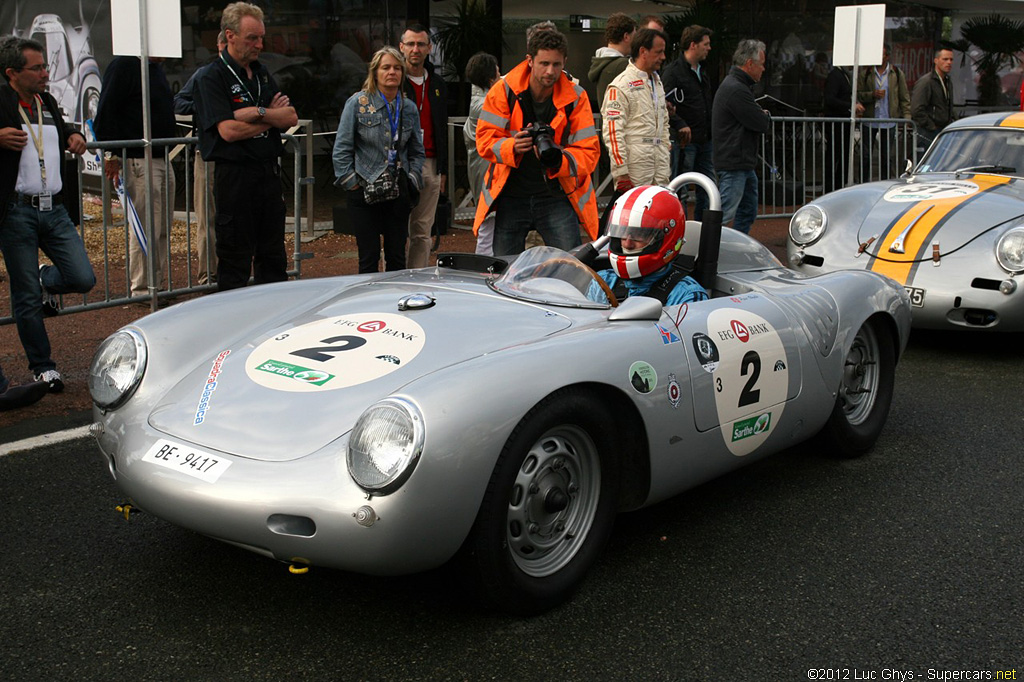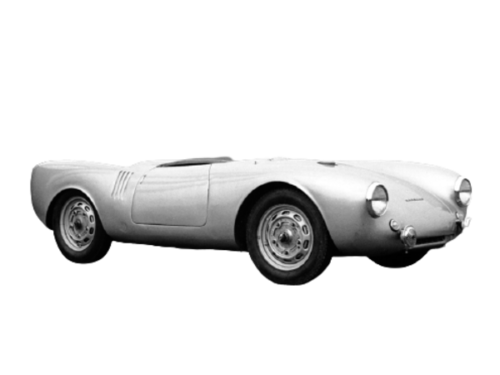Porsche 550 Rs Spyder (1954 – 1956)
Share
Porsche 550 RS Spyder (1954 – 1956)
The Porsche 550 RS Spyder is an iconic race car that has left an indelible mark on automotive history. With its lightweight design, agile handling, and powerful engine, the 550 RS Spyder became a formidable competitor on racetracks throughout the 1950s. This blog post explores the rich heritage, design, performance, and legacy of the Porsche 550 RS Spyder, particularly during its production years from 1954 to 1956.
![]()
A Brief History of the Porsche 550 RS Spyder
Introduced in 1954, the Porsche 550 RS Spyder was the brainchild of Ferdinand "Butzi" Porsche, the grandson of the company founder. The car was developed specifically for motorsports, aimed at competing in events like the Mille Miglia and the 24 Hours of Le Mans. The development of this iconic sports car was a response to the growing demand for lightweight, high-performance racing vehicles.
The 550 RS Spyder was initially built in limited numbers, with only 90 units produced between 1953 and 1956. The very first Spyder debuted to significant acclaim, featuring a sleek body designed by Erwin Komenda and built with aluminum and light metals. Its stunning appearance wowed fans and racers alike and set the stage for its success.

Design and Features
The design of the Porsche 550 RS Spyder is a testament to Porsche's commitment to innovation and performance. The car featured a low-slung profile, a long hood, and a streamlined silhouette, which reduced drag and improved aerodynamics. Measuring approximately 3,978 mm (156.6 in) in length and 1,680 mm (66.1 in) in width, the Spyder was incredibly agile, making it perfect for racing.
One of the most remarkable aspects of the 550 RS is its lightweight construction. With a total weight of around 550 kg (1,213 lbs), much of its lightness came from its aluminum body and minimalist design. The interior was stripped down to the essentials to save weight, featuring racing seats and a simple dashboard with minimal instrumentation.

Engine and Performance
Under the hood, the Porsche 550 RS Spyder was powered by a 1.5-liter flat-four engine, known as the Fuhrmann engine. This horizontally opposed engine produced an impressive 110 horsepower, allowing the car to accelerate from 0 to 60 mph in just around 7 seconds. The innovative engine design, combined with a lightweight chassis, offered a remarkable power-to-weight ratio that made the Spyder a dominant force in its class.
The 550 RS Spyder also featured a four-speed manual transmission, which provided precise gear shifts for a thrilling driving experience. Its rear-engine layout yielded exceptional traction and handling, making it a favorite among racing enthusiasts. Drivers appreciated the Spyder's quick responsiveness and nimble demeanor, elements that contributed to its success on the track.

Racing Achievements
The racing pedigree of the Porsche 550 RS Spyder is nothing short of legendary. The car quickly found success in various motorsport events, including the 24 Hours of Le Mans, the Mille Miglia, and numerous other endurance races. Notable drivers such as Paul O’Shea, Ken Miles, and James Dean piloted the Spyder to victory, cementing its status as a formidable competitor.
In 1955, driver Hans Herrmann secured a class win for the 550 RS at the 24 Hours of Le Mans, solidifying the car's recognition in the world of motorsport. The success of the 550 RS Spyder greatly contributed to Porsche's reputation as a serious contender in motorsports and emphasized the engineering prowess of the brand.

Legacy and Impact
The Porsche 550 RS Spyder's influence extends beyond its remarkable racing achievements. It played an instrumental role in the establishment of Porsche as a respected name in the automotive world and inspired future generations of sports cars. The engineering innovations developed during the 550 RS’s production paved the way for models like the Porsche 911 and the Boxster.
Moreover, the car has gained an almost cult-like following among collectors and enthusiasts. Its designs, technological advancements, and historical significance make it a highly sought-after vehicle in the classic car market. Many of the surviving models are frequently showcased at classic car shows and events, coveted by collectors who appreciate the blend of performance, innovation, and history that the 550 RS embodies.

Conclusion
The Porsche 550 RS Spyder is more than just a race car; it is a piece of automotive history that illustrates the dedication and vision of its creators. With its lightweight design, impressive performance capabilities, and remarkable racing achievements, the 550 RS remains an iconic symbol of Porsche's racing heritage.
The legacy of the Porsche 550 RS Spyder continues to inspire a new generation of automotive enthusiasts. As the car lives on in the hearts and minds of collectors and racers, it reminds us of a time when engineering and design converged to create something truly extraordinary. Whether as a historical fixture in the Porsche lineup or as a beloved classic among collectors, the Porsche 550 RS Spyder will forever hold a special place in the world of automotive excellence.